Introduction
View the Executive Summary for this Policy Circle Brief
Watch The Policy Circle’s Virtual Move the Needle on Education Innovation here:
Innovation in education involves leveraging technology to enhance learning experiences and create more personalized and accessible educational opportunities. Innovation and education go hand in hand – they empower individuals to navigate the rapidly changing world and push the boundaries of progress by constantly expanding their knowledge and skills. 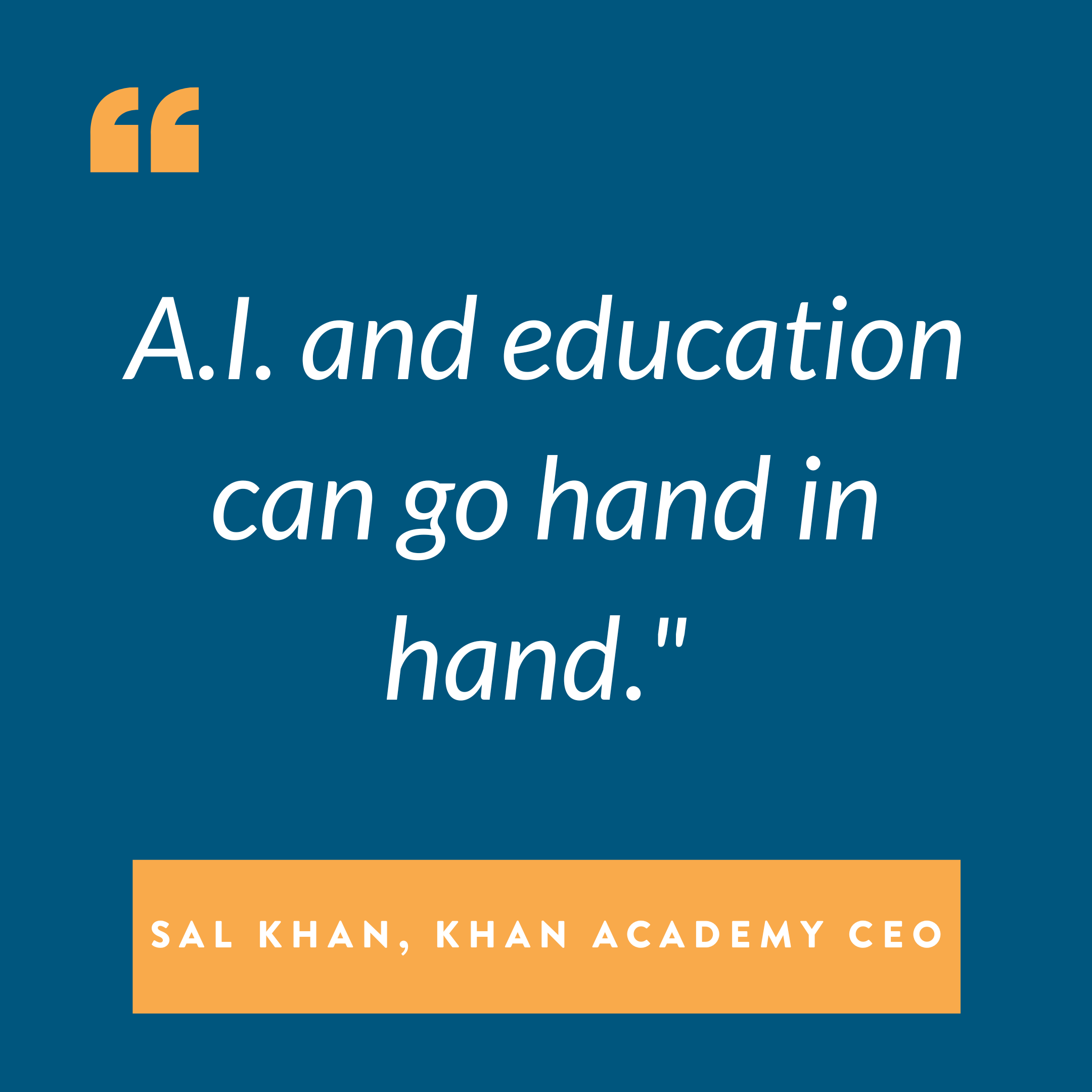
That introductory paragraph was written by ChatGPT following a simple four-word prompt. You’ve likely heard of ChatGPT, and the viral use of this Artificial Intelligence chatbot, but how is this revolutionary technology impacting education? What other promising innovations will improve school operations, strengthen curriculums, expand teaching tools, and boost parental engagement?
Most importantly, how can technology and innovation improve educational outcomes? In spite of increased spending, the “Nation’s Report Card,” from the National Assessment of Educational Progress (NAEP) shows literacy and math scores in the United States are at the lowest level in decades.
To keep pace in our ever-changing world, educational practices must continue to evolve. The educational system must innovate. This Brief gives an overview of the latest innovative practices in education and demonstrates the types of policies and practices that can encourage more of it.
Case Studies
The Urban Cottage Educational Collaborative, Tampa Florida
In 2015, Marissa Hess, a former public school teacher, started a unique learning environment in Tampa, Florida that provides a mix of services for students, from small group classes for homeschooled students to after-school tutoring programs for students in traditional educational settings to summer camps.
As she describes it:
“I do not think there’s any one way, any one structure for every single child, for every family across the board. I have said it a thousand times, children are not computers and teachers are not programmers. And so there are many, many innovators out there that see a problem in the system and they want to do something different. And I think education has not been a free market.”
The Collaborative meets in a small bungalow on a busy street and aims to provide a nurturing environment where great educators have the freedom to create tailored lessons for the students who participate.
AIM Education, Wichita, Kansas
Dalena Wallace is an educational entrepreneur from rural Kansas. She started as a homeschooling mom more than a decade ago and has gradually expanded her role from managing a homeschooling co-operative (where multiple homeschooling families come together for shared classes and activities) to launching a micro-school (a small school of less than 15 students) to founding a hybrid homeschool (a school that meets in traditional classes for part of the week and students work from home during the other part). All of these fall under the umbrella of her organization, AIM Education, and all are oriented towards helping families find the best learning environment for their child. AIM Education shows that educational innovation is not just happening in cities and suburbs.
If you are interested in hearing more about the innovative ventures cropping up around the country, The VELA fund has a lot of great videos about educational entrepreneurs.
Why it Matters
A strong education provides the ultimate foundation to unlock a higher quality of life, productivity in society, and overall well-being. While per-pupil spending has increased every year since 2015, testing scores continue to fall. According to the Programme for International Student Assessment (PISA), the U.S. ranked 13th out of 79 countries and regions for reading levels and 37th for math.
The pandemic sparked necessary transformations, but consistent adoption of innovative practices is lacking in many school systems. Innovation is crucial to close educational achievement gaps and prepare students for a rapidly evolving world.
Putting Into Context
History
Education drives creativity, science, innovation, and technological advancements, but what technology has helped propel education practices into the modern world? (For an overview, check out The Policy Circle’s Education Brief). Below are approaches, advancements, and technological adaptations adopted throughout history in education practices:
Distance Learning- 1800s
“Remote learning may be seen as a recent trend, but this practice was in fact implemented in the 1800s through mail services.” 
In 1874 the United States launched the first “distance education program” at Illinois Wesleyan University. After training and reskilling coal miners via mailed textbooks in the late 1800s, the distance education approach dramatically boosted rates of enrollment. The term “distance education” was coined by the University of Wisconsin Madison, in 1892.
On the Radio- 1900s
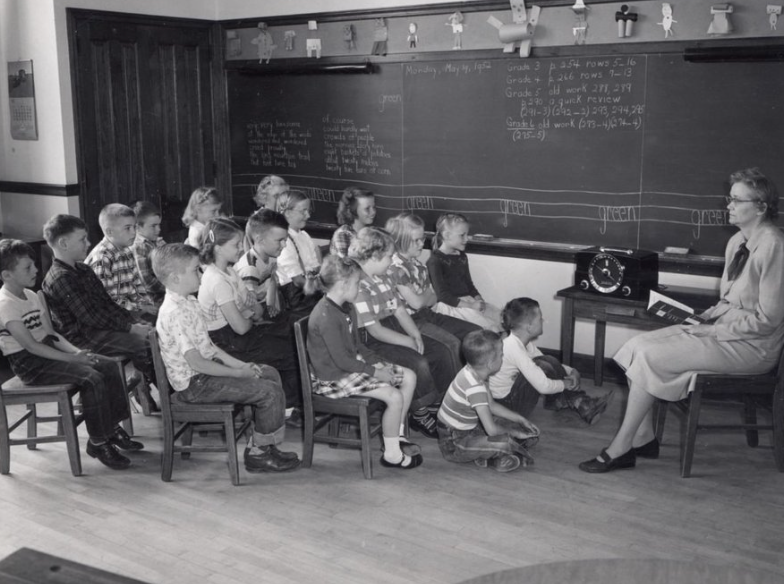 After the world’s first radio message was sent by Guglielmo Marconi in 1897, radio became an important tool in education. In the 1920’s Pennsylvania State released live academic courses through radio networks to students all over the country.
After the world’s first radio message was sent by Guglielmo Marconi in 1897, radio became an important tool in education. In the 1920’s Pennsylvania State released live academic courses through radio networks to students all over the country.
Television Programming- 1900s
Television has been used as a tool for education since the medium was first introduced in the 1930s with the first television set installed in a California classroom in 1939. In the early days, educational television programs were limited in scope and largely aimed at adults. However, in the 1950s and 1960s, television began to be used more extensively in schools as a means of delivering educational content to students. Public television stations in the United States, such as PBS, became a major source of educational programming, with many shows becoming household names.
Overhead Projector- 1940s
Overhead projectors have been a staple of classrooms for many years. 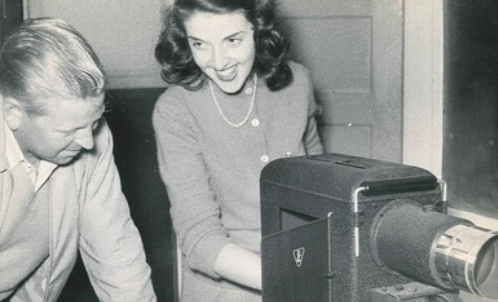 The first known overhead projector was created in the 1940s by the 3M Company. The projector was introduced during WWII into the military and shortly thereafter adopted into business settings. However, as technology improved, the overhead projector found its way into classrooms.
The first known overhead projector was created in the 1940s by the 3M Company. The projector was introduced during WWII into the military and shortly thereafter adopted into business settings. However, as technology improved, the overhead projector found its way into classrooms.
Handheld Calculators-1970s
The introduction of handheld calculators in education had a significant impact on how students learn and approach math. In the 1970s, handheld calculators became available. Despite some initial concerns that the use  of calculators would hinder students’ ability to do mental arithmetic, handheld calculators became and continue to be an essential tool in mathematics education, and are commonly used in classrooms from elementary school all the way through to university-level courses.
of calculators would hinder students’ ability to do mental arithmetic, handheld calculators became and continue to be an essential tool in mathematics education, and are commonly used in classrooms from elementary school all the way through to university-level courses.
Scantron- 1970s
The Scantron was first introduced to education in the early 1970s as a way to streamline the grading process for multiple-choice tests. 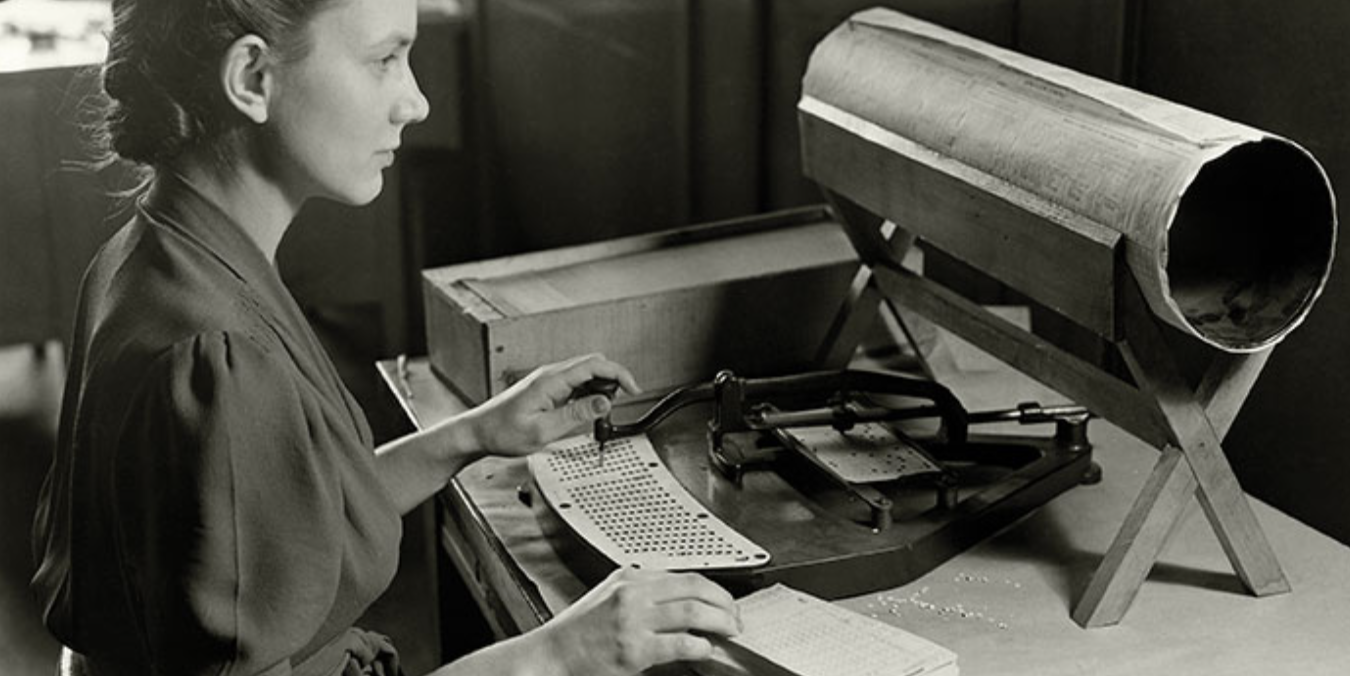 It was initially used in large-scale standardized testing programs but quickly became a popular tool for teachers in individual classrooms. Its widespread adoption had a significant impact on the field of education, changing the way tests were taken and graded and influencing the development of education policy and assessment.
It was initially used in large-scale standardized testing programs but quickly became a popular tool for teachers in individual classrooms. Its widespread adoption had a significant impact on the field of education, changing the way tests were taken and graded and influencing the development of education policy and assessment.
Personal Computers- 1980s
The introduction of personal computers into education in the 1980s and 1990s had a transformative effect on the field of education. It revolutionized the way students learn, interact, and engage with information. Personal computers allowed for the creation of interactive educational software and online learning platforms, enabling students to explore complex topics in a more engaging and dynamic way.
Internet- 1990s
In 1994, only 34% of U.S. schools had access to the internet. By 2002, 99% of schools had access. The introduction of the Internet had a profound impact on the classroom, transforming the way students learn and access information. It opened up a vast repository of knowledge and resources, making it possible for students to explore topics in greater depth and breadth.
Technology has revolutionized learning in the classroom, and its use has opened up new avenues for personalized and adaptive learning. With digital textbooks, educational apps, and online platforms, students have access to educational resources 24/7.
This Brief will explore how technology today is transforming education and propelling learning into the 22nd century.
By The Numbers
According to the National Center for Education Statistics (NCES), between fall 2019 and fall 2020, total public elementary and secondary school enrollment dropped from 50.8 million to 49.4 million students. This three percent drop erased a decade of steady growth.
The number of families choosing to homeschool their children doubled in 2020, according to a Census survey. According to the National Home Education Research Institute (NHERI), there were 3.7 million homeschooled students in the USA during the 2020/2021 school year. The institute’s data also shows that from late March to early May of 2022, 5.22% of all school-age children were homeschooled.
As of the 2020-2021 school year, public schools employ approximately 3,032,471 teachers and private schools employ about half a million teachers. 90% of K-12 schools in the US have at least one computer for every five students and 98% of American classrooms now have internet access.
87% of teachers say their technological skills have improved during the pandemic.
Innovation Today
Through the examination of potential options within schools, tools, and talent, innovative opportunities are plentiful and provide an optimistic look at the future of education.
SCHOOLS
Micro-schools
While a micro-school is not a new idea, it is increasingly gaining popularity. Micro-schools “sometimes referred to as learning pods, is the reimagining of the one-room schoolhouse, where class sizes are usually fewer than 15 students of varying ages, and the schedule and curriculum is tailored to fit the needs of each class.” 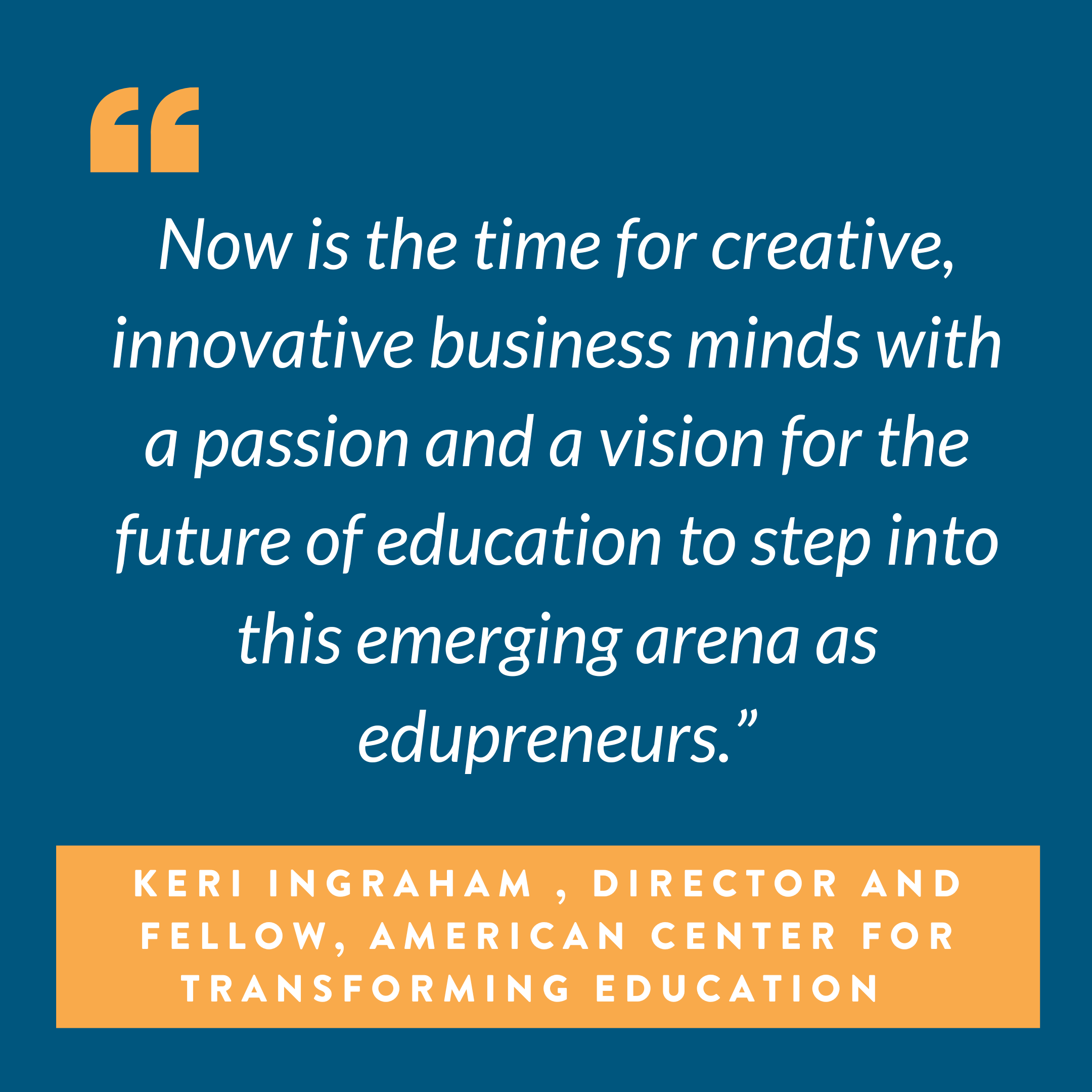
Micro-schooling allows students to learn in a smaller group, learn at their own pace, and receive personalized instruction and attention necessary for individual progress and success. One ed-tech startup, Prenda, recently raised over $20 million to continue to develop its network of micro-schools. Typically incorporating around 15 students or less of mixed ages, micro-schooling can also provide a potentially more affordable option than private schools. Micro-schooling can be seen increasingly emerging across the country, including in Washington D.C. with the Mysa School. Additionally, resources like the Microschool Revolution, provide loans and financial assistance to help support the launch of new micro-schools. Micro-schooling offers another unique option for education catered to the needs of an individual student.
Hybrid Homeschools
According to EdChoice’s polling, over 40% of Parents, Teachers, and Teenagers would prefer a school schedule that involved some days learning from home and some days learning from school. While many schools and districts struggled to provide a quality “hybrid” school schedule during the coronavirus pandemic, there are hundreds of schools around the country that have been using a hybrid schedule for years. Arlington, Texas’s Grace Prep, for example, opened all the way back in 1992 and has been providing a hybrid school experience since then. There is even an entire center at Kennesaw State University devoted to studying them.
Hybrid schooling allows families to sync the rhythms of schooling with the rhythms of family life. Too many students (and parents) are frustrated and overwhelmed by a school schedule and calendar that has them completely scheduled either in school or working or participating in extracurricular activities. Meals are slammed down, everyone is tired, and there isn’t the space for the quality family time that students and parents alike need to support and care for each other. Hybrid schedules create space in the week for family time, relaxation, outdoor time, and much more, as students are able to work at their own pace and in their own time from home.
School Choice
What is school choice? According to EdChoice, school choice “is a term that represents the many ways students access their K–12 education. Many still choose their schools by buying a home in their desired district, but today’s parents engage in school choice in more diverse and ever-evolving ways.”
To review the basics of what school choice is visit this video by EdChoice:
Empowering families and parents through school choice is a unique way to support the different needs and learning styles of each student. Data from recent polling reflects that while only 1 in 3 Americans believes K-12 education is going in the right direction in the United States, support for school choice policies from parents and the general public continues to climb. Support for school choice polls even higher after a brief description is given defining school choice.
Various programs and policies that provide families with the financial means to send their children to private schools include options like Education Savings Accounts, school vouchers, tax-credit scholarships, and more. These programs aim to give families more control and flexibility in choosing the educational opportunities that best fit their needs and goals. For a full breakdown of these definitions visit this brief overview.
TOOLS
Technological advancements have played a role in the classroom for decades. Revolutionary influences from the addition of the radio, television, personal calculators, and the internet have already forced education systems in the past to evolve, and the classroom must continue to adopt and implement new technology in order to remain relevant. With the rise of Artificial Intelligence (AI), new AI application systems, and other recent discoveries, education will undoubtedly rapidly change over the course of the next few years.
Artificial Intelligence & ChatGPT
Artificial Intelligence (AI), according to IBM, is a “field, which combines computer science and robust datasets, to enable problem-solving.” ChatGPT, a new tool leveraging Artificial Intelligence, allows users to search and create prompts for desired outcomes. It can draft rhyming poetry, book reports, research essays, and more. While met with some hesitation surrounding fears of students becoming too reliant on the tool (the same hesitation detailed in the initial adoption of the personal calculator), educators are finding workarounds to still require independent writing with examples like in-person essay tests and prompts. 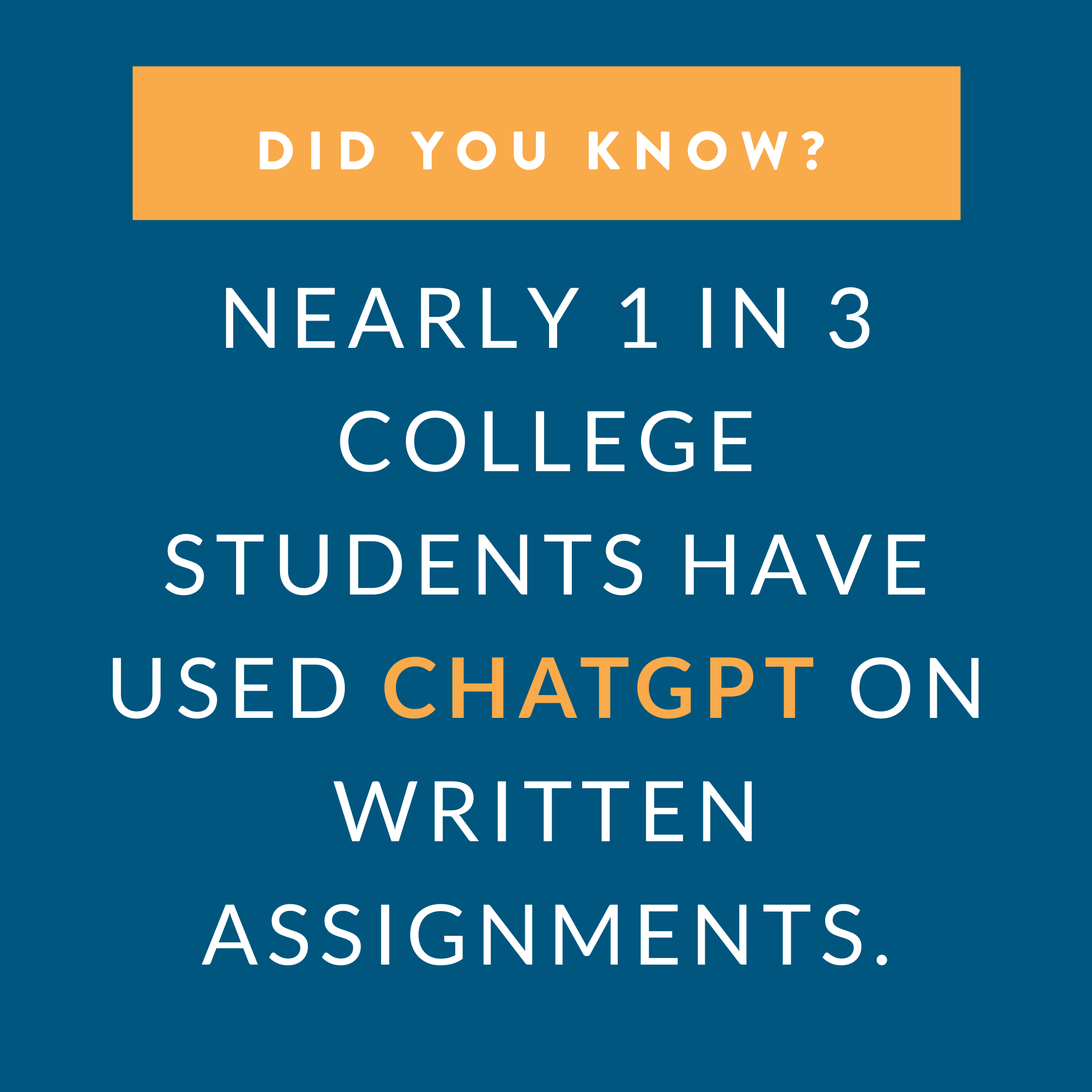
Within weeks of adoption and release for public consumption, ChatGPT was already utilized by 30% of college students as recent research revealed. Further, recent research from the Walton Family Foundation has shown that both teachers and students alike are leveraging this technology. In a survey of over 2,000 K-12 educators, 51% of teachers report using the tool, including 10% who use it every single day. Additionally, of those who have used ChatGPT, 88% of teachers and 79% of students say it’s had a positive impact. ChatGPT can also serve as a powerful tool for students with disabilities. A new analysis of Chat GPT from MIT Technology Review shares further that “ChatGPT” is going to change education, not destroy it.” While ChatGPT is still in its beginning days of adaptation, it will continue to impact and alter education alongside other further Artificial Intelligence developments.
Virtual Reality
Virtual reality (VR) has the potential to revolutionize education by creating immersive and interactive learning experiences for students. According to recent 2023 data, there are 65.9 million VR users in the U.S., which is 15% 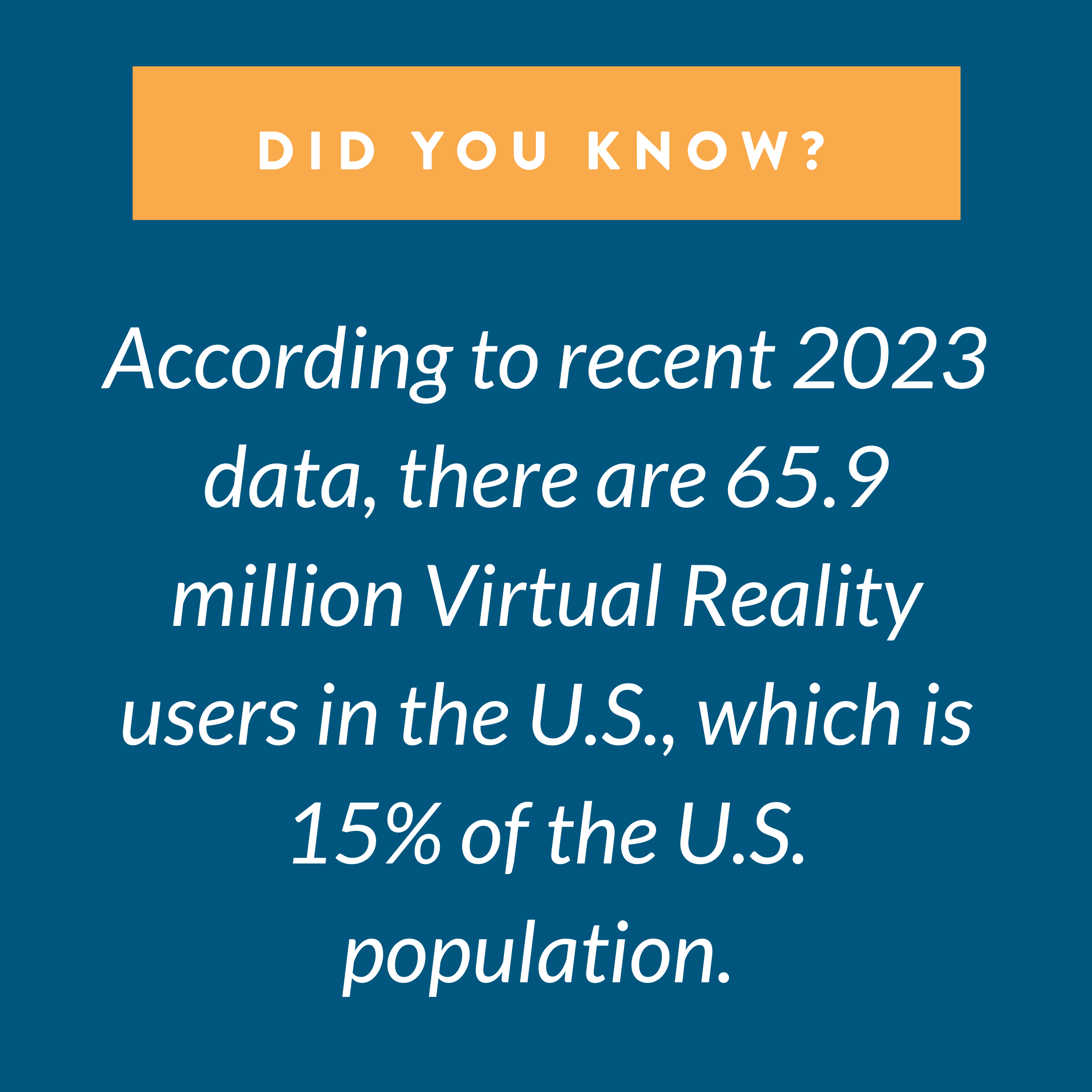 of the U.S. population. With VR technology, students can explore historical sites, travel through space, and participate in simulations that would otherwise be impossible or difficult to replicate in the real world. VR can also provide opportunities for students to practice skills such as public speaking and problem-solving in a safe and controlled environment. By using VR in education, teachers can engage students in new and exciting ways, enhance their understanding of complex concepts, and help them develop skills that are valuable in both academic and professional settings. VR can also be an effective tool for vocational courses and training.
of the U.S. population. With VR technology, students can explore historical sites, travel through space, and participate in simulations that would otherwise be impossible or difficult to replicate in the real world. VR can also provide opportunities for students to practice skills such as public speaking and problem-solving in a safe and controlled environment. By using VR in education, teachers can engage students in new and exciting ways, enhance their understanding of complex concepts, and help them develop skills that are valuable in both academic and professional settings. VR can also be an effective tool for vocational courses and training.
Both teachers and students are energized by VR, with 97% of students eager to take a VR course, and 93% of teachers reporting that they believe it will bring excitement to their classrooms.
Online & Adaptive Curricula
Adaptive curricula refer to educational programs that are designed to adjust and personalize the learning experience for individual students based on their progress, strengths, and weaknesses.
The goal of an adaptive curriculum is to provide an optimal learning path that maximizes the student’s potential and minimizes the time it takes to achieve their learning objectives. Adaptive curricula use various technologies such as artificial intelligence, machine learning, and data analytics to track and analyze student performance data in real-time and then use this information to adjust the content and delivery of the curriculum to meet the needs of each student.
Adaptive curricula are becoming increasingly popular in education because they can provide a more engaging, personalized, and effective learning experience for students, especially those with different learning styles or needs. Resources like Khan Academy allow students to progress at their own pace. Micro-school networks like Prenda leverage adaptive learning software to take the burden off of the teacher, who is then able to assist students and plan fun enrichment activities. The core academics are delivered via software, but all of the other elements of schooling (the social element, projects, art, music, etc.) is done in person. This allows each person/tool to do what it does best.
TALENT
While the “teacher shortage” is more complicated and nuanced than headlines might display, there is a current challenge in recruiting the number of quality teachers the U.S. needs to fill all of its classrooms. The recruitment of teachers has always been historically challenging, but with the challenges presented to the education system during COVID-19, recruitment and retention became even more difficult. Frederick Hess of AEI shares that there is a “shortage of people who want to do the job the way we’ve configured the job….The ways that technology can change the game is it can change who kids learn from, how kids can learn and have relationship with teachers.” There have been pushes for alternative pathways into the classroom (Teach for America for example) but there is still a ways to go and innovative practices are needed.
A challenge of the teacher supply also centers about the type of teacher that is still needed. “The biggest issue districts face in staffing schools with qualified teachers is… a chronic and perpetual misalignment of teacher supply and demand.” To meet the need, schools are exploring creative recruitment strategies, modified work strategies, and exploring opportunities to leverage contractors to fill the gaps. The teacher shortage in the US is also partly due to licensing constraints. Current licensing requirements often make it difficult for individuals with valuable skills and experience to enter the teaching profession.
The use of technology and acceptance of new school models provides a different teaching environment just as much as a different learning environment. Opportunities found in school choice, micro-schools, private schools, and other newer models could potentially provide the environment to teach with fewer disruptions and frustrations and help attract and retain great teachers.
The Role of Government
Federal
The U.S. Constitution doesn’t mention education directly. Instead, it delegates power to the states in the 10th Amendment, meaning that anything not explicitly stated in the Constitution as a federal government power is left up to the states to decide. The U.S. Department of Education was established on May 4, 1980, under the Department of Education Organization Act, which was signed into law by President Jimmy Carter. The U.S. Department of Education promotes “educational excellence and equal access,” and the federal government provides monetary support to states through grants to help fill funding gaps.
To read more about the process of the federal legislation and its role in education visit The Policy Circle’s K-12 Education Brief.
State and Local
Innovation and technological advancements can take place in any frame of traditional public, private, charter, or homeschool systems. The key is to make space for entrepreneurial educators and innovative practices within state and local education policies.
Education Savings Accounts, Charter Schools, Magnet Schools, and Open Enrollment are all ways that states and local school districts can promote school choice. Another less well known type of school choice policy is “course access.” Course access programs, also known as course choice, “subdivide the funding that a student receives into smaller units and allows that student to take some of that funding to outside course providers.” This mechanism offers students many more options for courses than what might be available solely at their school.
State and local districts must also encourage and accept innovation within traditional public schools and see alternative approaches as a positive and not as unhealthy competition. In Fleming County, Kentucky, an area with a large home-schooling community, the district superintendent embraced and supported home-schooling families. Working together, the district created a program that “operates as either a full-time virtual program, in which students follow a district-driven curriculum from home, or as a hybrid home-school program, in which students spend some time in local schools and some time at home.” Through cooperation and a willingness to break the traditional mold, the “district’s outreach built up trust and goodwill among those in the home-schooling community, many of the county’s home-schooling families signed up.”
If we want to see real pluralism, and the panoply of options that it creates, we must push schools and those who authorize and manage them to take full advantage of their freedoms. States have in place rules and regulations that make innovative models, like those in Fleming County, more difficult to create. The most prominent example is seat time. Many states award class credit on the basis of a number of instructional hours spent in a classroom. Innovative schools that are experimenting with the school day or school week let students progress at their own pace, and so might not have them sit for a set number of hours. States can move to a competency-based framework that allows students to earn credit for a class after they have demonstrated mastery of the subject matter, rather than a set amount of time. That is how Fleming County was able to create its innovative partnership program.
There are also restrictive union contracts/collective bargaining agreements that set strict class size, instructional time, or duty regulations can also get in the way of rethinking what classes or schools can look like. Both can really tie both teachers’ and administrators’ hands.
Private Sector
Private companies are investing in research and development, creating innovative education products and solutions, and bringing their expertise and resources to drive education innovation.
U.S. education technology companies raised $5.2 billion of investment capital in 2022, down from $8.2 billion in 2021. As of February 2022, there were 16.6K+ EdTech startups that provide online courses, educational resources, learning platforms, management solutions, teaching resources, and other services for K-12 students, teachers, parents and administrators.
Innovative companies like Tiny Tap help teachers, therapists and educational experts worldwide create their own tools. (Tiny Tap has 200k activities and games being used by 9.5 million registered parents.) Austin-based Trashbots provides a platform where any student can learn to code – starting as young as Kindergarten. Encouraging entrepreneurship in the education technology sector is critical to fostering innovation and a cooperative space for educators and entrepreneurs to partner is important for collaboration.
Challenges and Areas for Reform
One of the key areas of reform at the state level is the need for flexible legislation as described by EdChoice:
Here are some examples of legislative reforms that can foster innovation in education:
- School choice: “The Biggest Education Innovation Is Growing Use of School Choice” – Legislative reforms that expand school choice options for families, such as education savings accounts, vouchers, and tax-credit scholarships, can encourage the development of innovative education models that better meet the needs of students.
- Competency-based learning: Legislative reforms that allow for more flexibility in how students earn credit, such as competency-based learning, can enable students to learn at their own pace and focus on their individual strengths and interests.
- Technology-Focused professional development for teachers: Legislative reforms can play a critical role in ensuring that teachers are equipped with the latest knowledge and skills to effectively integrate technology and innovative teaching methods into their classrooms.
- Public-private partnerships: Legislative reforms that encourage partnerships between public schools and private companies can foster innovation by leveraging the expertise and resources of the private sector. In addition, by partnering with local businesses to understand their workforce needs, school districts can foster the development of classrooms-to-careers initiatives.
- Research and Development: The United States only invests around 0.2% of the education budget on research. Investment in education-focused research and startups can be incentivized with grants and rewards.
- Flexible funding: Legislative reforms that provide more flexibility in how education funds are allocated can enable schools and districts to invest in innovative approaches to teaching and learning, such as technology integration and project-based learning.
Overall, legislative reforms that prioritize flexibility, innovation, and student-centered approaches to education can help drive progress in the education sector and better prepare students for success in the 21st century.
Conclusion
Innovation and education are inextricably linked, and the need for continued development in the classroom has never been more critical. The implementation of new technologies and approaches can help close achievement gaps and ensure students are prepared to meet the challenges of the modern world. The promotion of educational innovation, school choice, and personalized learning will empower families to make informed decisions about their children’s education and offer new opportunities to individualize and enhance the learning experience. By embracing innovation in education, we can provide students with the highest quality education and empower them to achieve their full potential.
Ways to Get Involved/What Can You Do
Measure: Find out what your state and district are doing about K-12 education and innovation.
- Do you know the state of K-12 education in your community or state?
- Do you know how your district’s public school ranks? Are there private or vocational options?
- Do you know your school district’s budget?
- What are your state’s laws on school choice?
- Does your state offer tax credit or similar scholarships?
- Look up in EdChoice’s State Index what your state currently offers in relationship to vouchers and ESAs.
- Does your state offer tax credit or similar scholarships?
- How is technology integrated in your local school?
Identify: Who are the influencers in your state, county, or community? Learn about their priorities and consider how to contact them, including elected officials, attorneys general, law enforcement, boards of education, city councils, journalists, media outlets, community organizations, and local businesses.
- Who are the members of the school board in your community? Who is your state’s superintendent of schools?
- Who is your school district’s superintendent, and who are the principals?
- What steps have your state’s or community’s elected or appointed officials taken in terms of education?
Reach out: You are a catalyst. Finding a common cause is a great opportunity to develop relationships with people who may be outside of your immediate network. All it takes is a small team of two or three people to set a path for real improvement. The Policy Circle is your platform to convene with experts you want to hear from.
- Find allies in your community or in nearby towns and elsewhere in the state regarding education such as school choice or teacher licensing, teacher training in technology etc..
- Foster collaborative relationships with local businesses and schools – is there a pathway from classrooms to careers in your community?
Plan: Set some milestones based on your state’s legislative calendar and your school district board meeting calendar
- Don’t hesitate to contact The Policy Circle team, communications@thepolicycircle.org, for connections to the broader network, advice, insights on how to build rapport with policymakers and establish yourself as a civic leader.
Execute: Give it your best shot and show up.
Working with others, you may create something great for your community. Here are some tools to learn how to contact your representatives and write an op-ed.